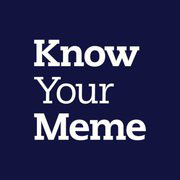Weeks ago, a new cult had emerged, preaching marvelous things beyond their world. They claimed to have received a vision of another space of not one, not two, nor even just three, but four dimensions. The Peers of Hyperspace are an eccentric bunch, going out on the streets to speak of geometries better than one can imagine.
They were refounded from an earlier cult which traced its roots back to the 19th century. When mathematicians considered Non-Euclidean geometries, some took this expansion of Euclid to its logical conclusion and suggested that our world could have more than 3 dimensions, and that our world is not even the most interesting. This put them at odds with the establishment, and the book Flatland began to circulate, which further challenged the status quo at the time.
The Seers of the Hyperspace, who became the Peers of Hyperspace, claimed that Einstein believed in more than 3 dimensions, but that he said the 4th dimension was time to conceal this view.
Eventually, the Seers of Hyperspace lost members during the recent cult-ural movements. Fortunately for them, they were able to successfully reform, and those that had left, such as the founders and leaders of UDAO, had returned to their fold.
They changed their name to Peers of Hyperspace to reflect their social overhaul.
They now claim that 4D space is the best. Their reasoning is that all higher dimensions 5D and above only have 3 ideal hyper-objects for each dimension: a simplex, a hypercube, and the hypercube’s dual: the orthoplex.
Dimensions 0 and 1, they deemed “trivial” since it’s just a point, or a point and line.
Dimension 3, they said, is penultimate to the 4th, since it has 5 solids:
The tetrahedron, with 4 triangles.
The cube, with 6 squares.
The octahedron, with 8 triangles.
The dodecahedron, with 12 pentagons.
And the icosahedron, with 20 triangles.
Dimension 4 was considered better because it had 6 hypersolids:
The 4-simplex, with 5 tetrahedra.
The tesseract, with 8 cubes.
The demitesseract, with 16 tetrahedra.
The octaplex, with 24 octahedra.
The dodecaplex, with 120 dodecahedra.
And the tetraplex, with 600 tetrahedra.
Concerning 2 Dimensional, the Peers of Hyperspace said:
“In two dimensions, the lines may bend such that it’s two extremities meet. It is here where shapes may form.”
The speaker then described the many types of shapes in detail, periodically remarking that, for all that it has, the shape is flat and contained.
“… beyond this, we get many other such shapes. The nonagon, decagon, hendecagon-- it’s a rather boring sequence. There’s the heptagon with a hundred sides, the myriagon with a thousand, megagon with a million-- you get the idea.”
“The aperigon is a curious case. It wants you to think it’s a circle, but don’t fall for its lies. This imposter-shape deceives numerous people, claiming that configuration is the most important, and crafts an order of people who get promoted from less to more, conveniently using the sides of shapes as a metric, from least to greatest, as if that even applies! Indeed, they even claim the dodecagon to be evil, yet they hardly know what evil is.”
But they were wrong.
The CoC does not promote by polygon. They promote by drawing inward.
Who says that configuration is most important? It’s importance is within geometry. If it does apply, then geometry is involved. Otherwise, it’s irrelevant.
“Who said that?”
The audience reacts to the speaker with confusion.
“Anyway, I had a vision of a very tall tower with only one room at the top, so the only way in is through flight.”
Were you eavesdropping?
“And inside the room…”
The speaker starts to sweat.
“There was a glowing orb. I saw it’s eye suddenly appear, as if it was looking at me.”
Yes, that was me wondering why you were peeping in my room, nevermind the how.
“The orb leapt out in a rush,”
I was almost late for a meeting, not that it’s any of your business.
“and swooped down with its gross feathery, and even doggish wings?”
I forgot that the annoying dog is in there. That explains a lot, like my inclination for doing pranks, and some of my weird, almost metaphysical powers.
After he finished describing his vision, which unbeknownst to him was of the angel, the speaker concluded with “Ponder.” and everyone in attendance closed their eyes in contemplation.
The angel was watching the crowd to see if the ritual does anything. Only a few members ascended the physical plane.
One of them approached the angel.



